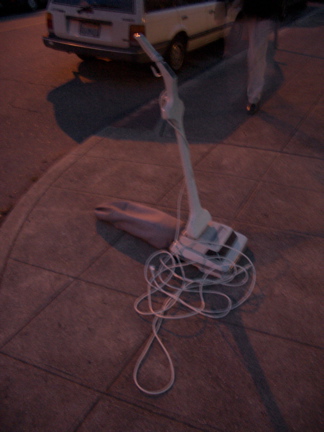Earlier in the season, “24” was getting some heat for its depiction of Middle Eastern Muslims as remorseless though very clever killers. The show, and the Fox network, responded with some public-service announcements informing viewers that not every Muslim is bad. And one episode portrayed a pair of young Arab-American sporting-goods store owners fighting alongside the show’s hero against a team of bad guys deployed by a ruthless U.S. defense contractor.
Last night’s episode introduced a new group of cartoonish evil-abetters.
The terrorists hijack a nuclear weapon in an ambush described as happening variously “in Iowa,” “in mountainous terrain” and at latitude 37 degrees north and longitude 115 degrees west, a point that happens to be a scrubby patch of desert about 60 miles north of Las Vegas. The geographic niceties aside, the bad guys have a bomb and appear to be heading for a big city — Chicago? — to set it off. The U.S. counterterrorism force has one chance of finding the mastermind and stopping the attack, though — a bad guy they’ve captured at an L.A.-area marina. To get the information they need to avert the attack, it’s clear they’re going to torture the suspect.
But the terrorist leader is one step ahead of them. He actually has one of his henchmen call a liberal civil-liberties lawyer (working for a group called Amnesty Global). The lawyer manages to wake up a federal judge, present his case that the government is about to abuse an upstanding U.S. citizen, get an injunction, and hightail it down to counterterrorism HQ to stop the torture session — all in 10 minutes on the show’s real-time clock. Of course, none of that process happens on camera. All we know is that, just as the interrogators are about to do their stuff, they’re halted by an insufferably smug attorney spouting some Bill of Rights crap. Of course, no one, including the president of the United States, is willing to contravene the court order halting the interrogation, even though millions of lives are at stake; and though the civil-liberties lawyer managed to get a judge to turn handsprings in the middle of the night and get an order in a millisecond, the script explains the government is powerless to appeal the order until the following day.
Luckily, it turns out that there’s one man willing to defy the misguided application of constitutional protections: Jack Bauer, who gets hold of the suspect and, after an agonizing couple of minutes and several shattered suspect fingers, finds out everything he wants to know.
Like I said — the civil-liberties lawyer is just a cartoonish dupe. Just as the greedy, amoral defense-firm execs were earlier in the show. But you have to wonder how many people are watching this, saying, “Goddamn liberals!” and cheering for the torture. Lots and lots, I bet.


